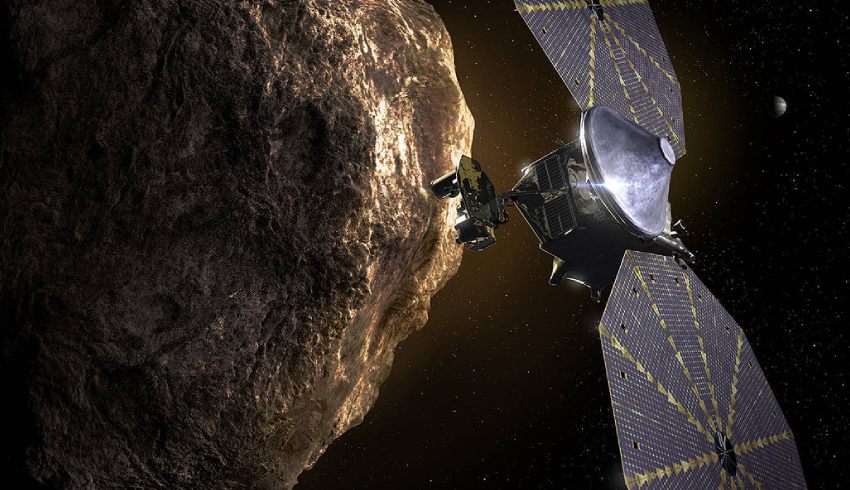The agency said there is a current plan for another latch attempt in April, but the team is also assessing the possibility of leaving the solar array as is, NASA said in a blog on 12 January.
Despite the ongoing issue, the American agency said Lucy is in “outbound cruise” mode, and all other spacecraft systems “are normal”.
Lucy is the world’s first mission set to study the asteroids and will allow scientists to define how the “solar system’s planets formed 4.5 billion years ago” and how they landed in their current configuration.
The US$981 million mission was launched on 16 October, and will see Lucy orbit for 12 years exploring the Trojans, which orbit around the sun in front and behind the gas giant Jupiter.
But hours after launch, one of its solar arrays – which powers the spacecraft through the Sun’s energy – did not correctly latch, and it has remained that way since.
“In the meantime, in the lab, they are testing a dual motor solar array deployment using both the primary and backup motor.
“The testing aims to determine if engaging both motors at the same time applies enough force to complete the deployment and latch the solar array,” the agency added.
Despite the unresolved issue, NASA said the arrays are producing “ample energy” for the spacecraft to continue on its course.
NASA said in its blog that Lucy is officially 30 million miles – or 48 million kilometres – away from Earth.
According to whereislucy.space, which updates the spacecraft’s distance from Earth in real time, it is now 55.05 million kilometres away, the latest data shows.
NASA said because Jupiter is so large, it scatters away all asteroids in its vicinity, and due to “gravitational influences” from the planet and sun, they have been trapped in stable orbits for many years.
Lucy will travel to eight different asteroids, one “main belt” asteroid – located between Mars and Jupiter – and seven Trojans.
Lucy is also just under 500 million kilometres away from its first destination, the main asteroid belt (Donaldjohanson), according to whereislucy.space.
The spacecraft will map surface geology, colour, composition, interiors, bulk properties and will search for rings and satellites on the Trojan asteroids.

Isabella Richards
Bella Richards is a journalist who has written for several local newspapers, her university newspaper and a tech magazine, and completed her Bachelor of Communications (Journalism) at the University of Technology Sydney in 2020. She joined Momentum Media in 2021, and has since written breaking news stories across Space Connect, Australian Aviation and World of Aviation.
You can email Bella on: [email protected]

